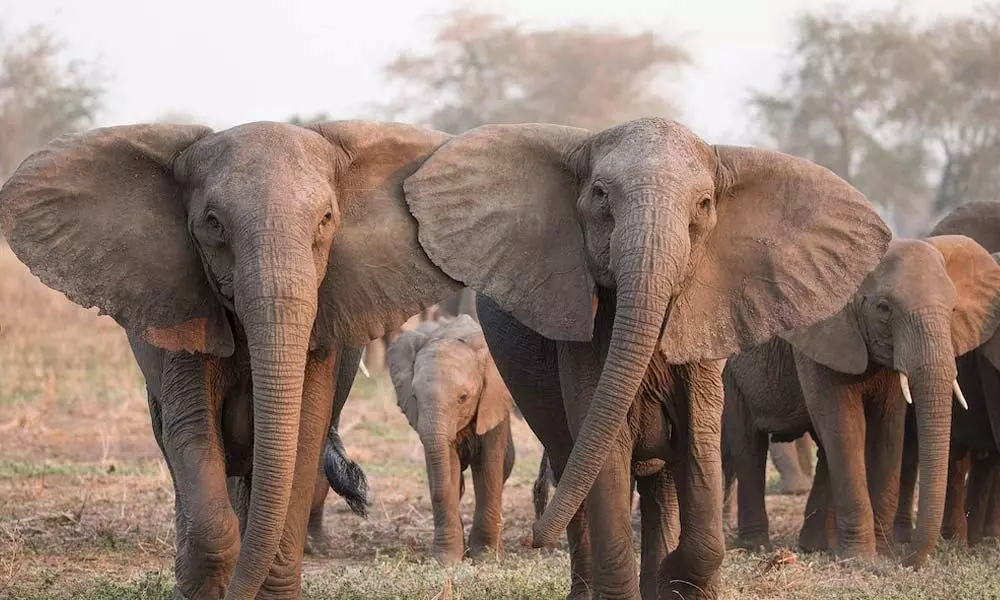The 12 Most Interesting Animal Discoveries Anticipated In 2021

The 12 Most Interesting Animal Discoveries Anticipated In 2021
The top 12 animal discoveries that caught our interest this year
The world has witnessed fearful and scary days due to the pandemic that spread over the different countries. Earth, on the other hand, is still a fantastic planet, filled with hope and wonder. The top 12 animal discoveries that caught our interest this year are listed below:
'Virgin births' in a rare bird
Owing to poisoning, poaching, and habitat destruction, California condors magnificent scavengers with such a wingspan of almost nine feet nearly disappeared by the middle of the twentieth century. All 22 condors were caught back to the wild in 1987 and bred in captivity before being released back into sections of California, Utah, Arizona, and Baja California in an attempt to save them. The overall population has now surpassed 500 people. Researchers have been keeping a close eye on the birds' breeding behavior and genetics, and in October, they found that two female birds had given birth to offspring without having bred. This is the earliest indication of the virgin birth in this species, often known as parthenogenesis notably such asany non-domesticated bird. Scientists believe that this type of reproduction is much more widespread in animals than previously assumed, in part since it is harder to identify and monitor.
COVID-19 detected in wild deer and various animals
COVID-19 is caused by a virus that can infect a wide range of animal species in addition to humans. Researchers discovered signs of infection in tigers, lions, gorillas, minks, snow leopards, domestic dogs, and domestic cats in captivity or domestication. In other species, the virus is thought to cause modest symptoms.
In North America, however, the virus infects wild white-tailed deer. According to data released in November on bioRxiv, a site that distributes early scientific findings, scientists in Iowa discovered active illnesses in about 80% of deer. The findings show that deer have indeed been infected several times by humans and are now passing the virus on to one another, yet no one knows how they got the virus. This study is comparable to one published earlier this year that found antibodies in 40 percent of 152 deer examined in three states notably Michigan, Illinois, and New York. The presence of a virus reservoir in a common animal is significant, according to researchers, because deer might potentially transmit the virus back to humans.
World's smallest reptile discovered
According to experts, Brookesia nana, or B. nana for short, is a new species of chameleon discovered in a jungle in northern Madagascar. This tiny reptile, known as a nano-chameleon, is about the size of sunflower seed and maybe the world's tiniest reptile. The discovery of such a little reptile raises intriguing issues concerning vertebrate body size limits. It also emphasizes Madagascar's incredible and critically endangered biodiversity. The chameleon's discoverers believe it will soon be categorized as highly endangered.
Black-footed ferret cloned
Researchers have effectively replicated a black-footed ferret using conserved cells from a long-dead wild animal to save another endangered species. This is the first time in the United States that a native endangered species has been cloned. The accomplishment, which was reported in February, is significant since there are only approximately 500 black-footed ferrets left, all of which are closely related and descendants of a single colony discovered in Wyoming in 1981 after the species was thought to be extinct.
Cells from one female named Willa, who died without reproducing in the mid-1980s, were kept on ice at the Frozen Zoo, a San Diego Zoo Wildlife Alliance program. These cells have now been cloned and transformed into Elizabeth Anne, a living ferret.
The world's bee diversity hotspot has been discovered
The San Bernardino Valley, which straddles Arizona and Mexico, is one of the Southwest's most important inland wetlands. Water has migrated south from the mountains for millennia and forced its way out of artesian wells, resulting in a plethora of plants and flowers all year. A wide variety of insects, including bees, benefit from the diversity of plants. Research published in April discovered that 497 species of bees exist within just over six square miles of the valley, making it the world's largest concentration of bee diversity.
The discovery emphasizes the importance of safeguarding the valley, which has been harmed by the construction of the border wall, a 30-foot steel structure that cuts the valley in half. Builders utilized a lot of aquifer water to build cement for the wall's base, which dried up the valley's springs.
Some elephants are losing their tusks as a result of evolution
For African elephants, Mozambique's civil war, which lasted from 1977 to 1992, was brutal: In the country's Gorongosa National Park, more than 90% of the animals were murdered for ivory. However, the devastation had an unintended consequence: some elephants are evolving without tusks, making them less vulnerable to poachers.
Jaguars are recovering old territories in the United States
Traditional jaguar habitats are Arizona and New Mexico: Big cats were once found throughout both states, as far north as the Grand Canyon, in the early 1900s. However, seven male jaguars have been reported in Arizona in the last 15 years
One juvenile male jaguar now lives on the protected property a few miles south of the border where Mexico, Arizona, and New Mexico meet, indicating that the species may be spreading north from its breeding population in Sonora, Mexico. Scientists believe that if the animals and their natural corridors are protected—and if the border wall isn't expanded further about the feline may be able to retake sections of their previous U.S. habitat.
Desert wells are dug by wild horses and donkeys
Despite the fact that some people consider wild horses and donkeys, also known as burros, to be an invasive threat, they can have a positive impact on their ecosystem, which benefits other creatures.
According to scientists, these animals can dig more than six feet deep to access groundwater, producing oases that are beneficial to other wildlife. The researchers discovered such wells in the Sonoran Desert, western Arizona, and the Mojave Desert, noting 57 different species that came to drink. American badgers, black bears, and a variety of birds, including some endangered species like elf owls, are among them.
The heads of sea slugs are hacked off by themselves
When an animal loses its head, it is usually the end of its life. Some sea slugs, however, disagree. Two species of marine invertebrates can rip off their own heads, according to a study published in Current Biology in March. After then, each dismembered head can regenerate a new body.
Such critters are also unique in that they can steal algae's chloroplasts and perhaps harvest solar energy within their own bodies. These extreme examples of bodily regeneration are of interest to researchers because they potentially have ramifications for human medicine.
Cockatoos learn from each other
Animal learning and culture research frequently focuses on a single species of mammals, such as cetaceans and great apes. Researchers intended to see if parrots have culture as well.
As per a July study published in the journal Science, certain sulfur-crested cockatoos, a gregarious, colorful bird, have worked out how to open garbage can lids, enabling them access to a new food supply. Other cockatoos quickly followed suit. According to study leader Barbara Klump, a behavioral ecologist at the Max Planck Institute of Animal Behavior in Germany, parrots have"entered the club of animals who display culture.
The migration of whales holds new records
According to research published in June in the journal Biology Letters, a grey whale set a world record for a marine vertebrate by traveling more than 16,700 miles more than halfway around the world. The male cetacean was discovered off the coast of Namibia in 2013 and is the first grey whale to be seen in the Southern Hemisphere. Simon Elwen, a zoologist at the University of Stellenbosch in South Africa, was doubtful when he first heard about the sighting in 2013.
Ants' brains can shrink and regrow
Indian jumping ants, which have forceps-like jaws and big black eyes and live in forests along India's western coast, have an unusual method for selecting queens. To accomplish so, workers hold competitions in which the winner is crowned king and is able to lay eggs. The ovaries of the victorious female grow, and her brain shrinks by up to 25%.















